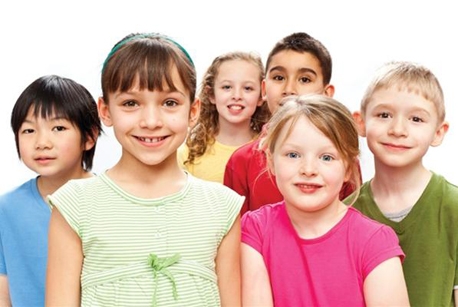The next few weeks will see the outcome of an 18-month review of how successful industry has been in addressing Bailey’s concerns. A survey by the Chartered Institute of Marketing in June 2012 found that 90% of parents still think there are problems with how some companies market to children and only 5% think there is nothing more we need to do to prevent inappropriate marketing.
So now seems like a good time to consider what the research industry is, isn’t and should be doing to ensure that we treat children in the best way we can. It’s timely because, aside from the Bailey review, we have two trends that have driven substantial growth in research with young people over the past few years.
Ready to listen
The 1989 United Nations Convention on the Rights of the Child (UNCRC) accorded children important rights to participate in decisions affecting them. Since then this has created the social and political will to listen to and empower children, encouraging more and more organisations to seek young people’s views on everything from health, education and public services to relationships with their parents and charitable giving.
At the same time the increasing economic importance of the children’s market means that commercial companies and brands are keener than ever to understand children’s views, feelings and behaviours because they are an extremely lucrative segment (estimated at $2 trillion globally) with three distinct roles: as consumers in their own right, as influencers of family purchases and as customers of tomorrow.
The first port of call for responsible researchers is, of course, the MRS Code of Conduct or the ICC/ESOMAR International Code on Market and Social Research. The three core pillars of market research ethics – wellbeing, voluntary informed consent and confidentiality – apply to children in the same way as to adults. We have to ensure the physical and psychological wellbeing of the children taking part in our research; we have to explain the purpose and process of the research in terms that they can understand and make sure that they are taking part of their own free will; and we need to keep all the data we gather from children private and safe.
However these codes also have special provisions and guidelines for children because the UNCRC also affords children a second set of rights – rights to protection. Although children are entitled to have a say in issues that affect them, they are also potentially vulnerable. In a market research context this means that they are more likely than other groups in the population to have unrealistic expectations (positive and negative) of what taking part in research will involve. Researchers today therefore find themselves having to navigate a way between letting children’s voices be heard on the one hand and keeping them safe from any harm or deception on the other. This can mean that interpreting the codes and accompanying guidelines in day-to-day projects is not necessarily straightforward, particularly as society, technology and business practices are evolving rapidly thus creating different contexts in which the rules need to be applied.
Commercialising childhood
Since the 1990s we have seen a change in methodology and terminology away from “subjects” studied at arm’s length to “participants” involved more intimately in ethnographies and co-creations. From the researcher’s point of view these methods are producing unparallelled in-depth insights into consumers’ relationships with products and services. For many consumers this is empowering and fun. But is it the same for children and should we encroach on children’s private space in order to find ways of selling them more toys or snacks?
“Understanding children’s media habits is central to understanding the best methods of communicating with them but this may involve spending time inside children’s homes and bedrooms. Is this empowering or simply intrusive?”
Understanding children’s media habits, for example, is central to understanding the best methods of communicating with them but this may involve spending time inside children’s homes and bedrooms, getting to grips with how they use all the technology that most of them have in what have been termed “media bedsits”. Is this empowering for children or simply intrusive?
While responsible researchers will have a signed consent form from the child and her parents there is little research on whether children really do understand exactly why researchers are in their rooms. How many researchers follow up to ask how children feel after the interviewers have gone home? Do we know how many children are left wondering who those funny people were and what they are going to do with the pictures they took? Again, good researchers take great care to ensure that children aren’t upset by any of the topics discussed – but it remains the case that we as adults may not appreciate what issues a child might be sensitive to.
One area that the Bailey Review singled out as of great concern to parents was children being used in peer-to-peer marketing or word-of-mouth marketing – a practice that is moving online. This has been labelled as bad practice and a “commercialisation of friendship” and industry bodies are pledging not to use this technique with under-16s. This reminds us that research with children should never be used as a method of selling and there should be no overlap between getting children’s opinions on a product or service and encouraging them to tell their friends about it.
Data collection on the internet brings with it other challenges for protecting children today. With record numbers of under-13s signing up to Facebook (clearly with a false age) it can be hard to know how old online respondents really are. MRS guidelines require us to ascertain age before collecting any more data online and to obtain permission from the parents of under-16s before proceeding. Yet how many researchers actually speak to a parent on the phone to be completely sure that it really is an adult who has given consent and that the child is the age they say?
Research in schools poses a further challenge. How do we ensure that children really do feel comfortable to opt-out of research that they do not want to take part in? After all, children do not normally have the option of whether or not they do their maths test or hand in their homework. The expectations of the child research participant are very different from those of the child pupil and we may not always stop to think that we are proposing a rather topsy-turvy world to children which needs quite a lot of explanation.
Maintaining trust
As new technologies offer an ever-increasing and dazzling array of research tools, such as mobile apps, digital signage or big data, we will continue to be faced with questions as to how we ensure that children are able to participate in ways that do not exploit them. Unfortunately we will not find ready-made answers in codes of conduct as these contain principles rather than directives.
The key to ensuring that we really do have children’s fully informed and completely voluntary consent, that we do not upset or otherwise harm them and that we keep data safe and confidential requires the industry to engage in an on-going proactive discussion and debate so that we can identify and disseminate best practice.
One way in which this can take place is for all parties involved in a research project – including the client, the agency, the recruiters and the fieldworkers – to have a joint agreement and joint responsibility for ensuring that the ethics of each project are discussed at the outset and reviewed throughout the project. This includes seeking children’s views on the research process and checking after the research is over that they have not been adversely affected.
The trust of children is essential for the industry. They are, after all, the clients of tomorrow.
Agnes Nairn is based in Bath, UK and is professor of marketing at EMLyon Business School in France. She has been working with Unilever CTI as a global research ethics consultant for several years and also advises the UK Department of Health, Department of Education and Prime Minister’s Strategy Unit on the ethics of marketing to children.
- Nairn is speaking at an MRS Members’ Evening in London on 28 November along with Richard Ellwood from Disney and Barbie Clarke of Family Kids and Youth in a debate entitled ‘Protection v Participation: Defining the boundaries of research with children’. Click here for details.
- Barbie Clarke, meanwhile, is chairing tomorrow’s Kids and Youth Research Conference in London. Click here for details.







0 Comments